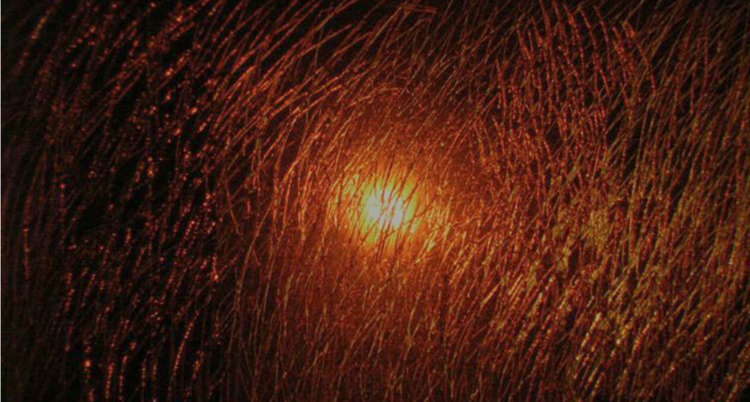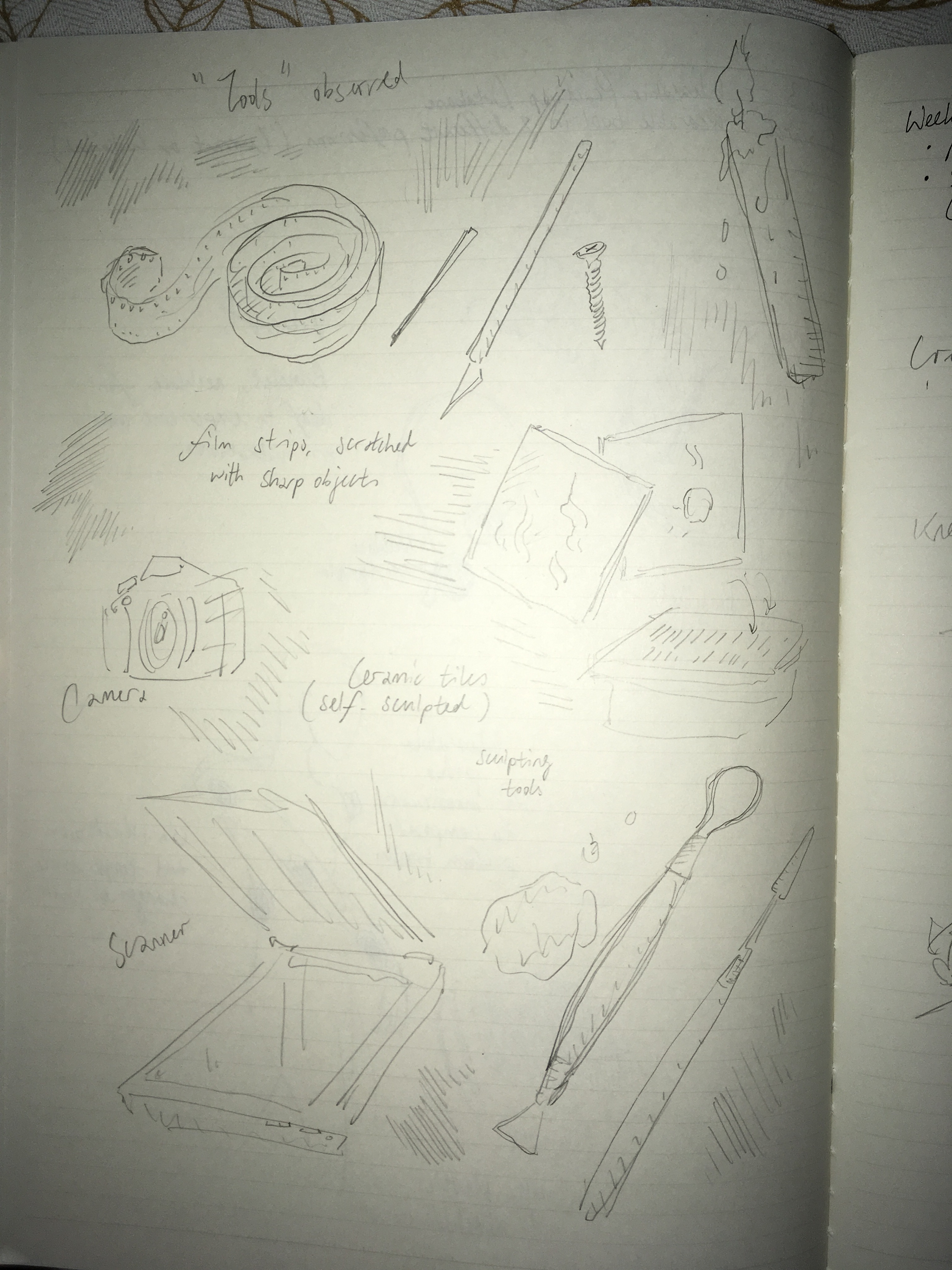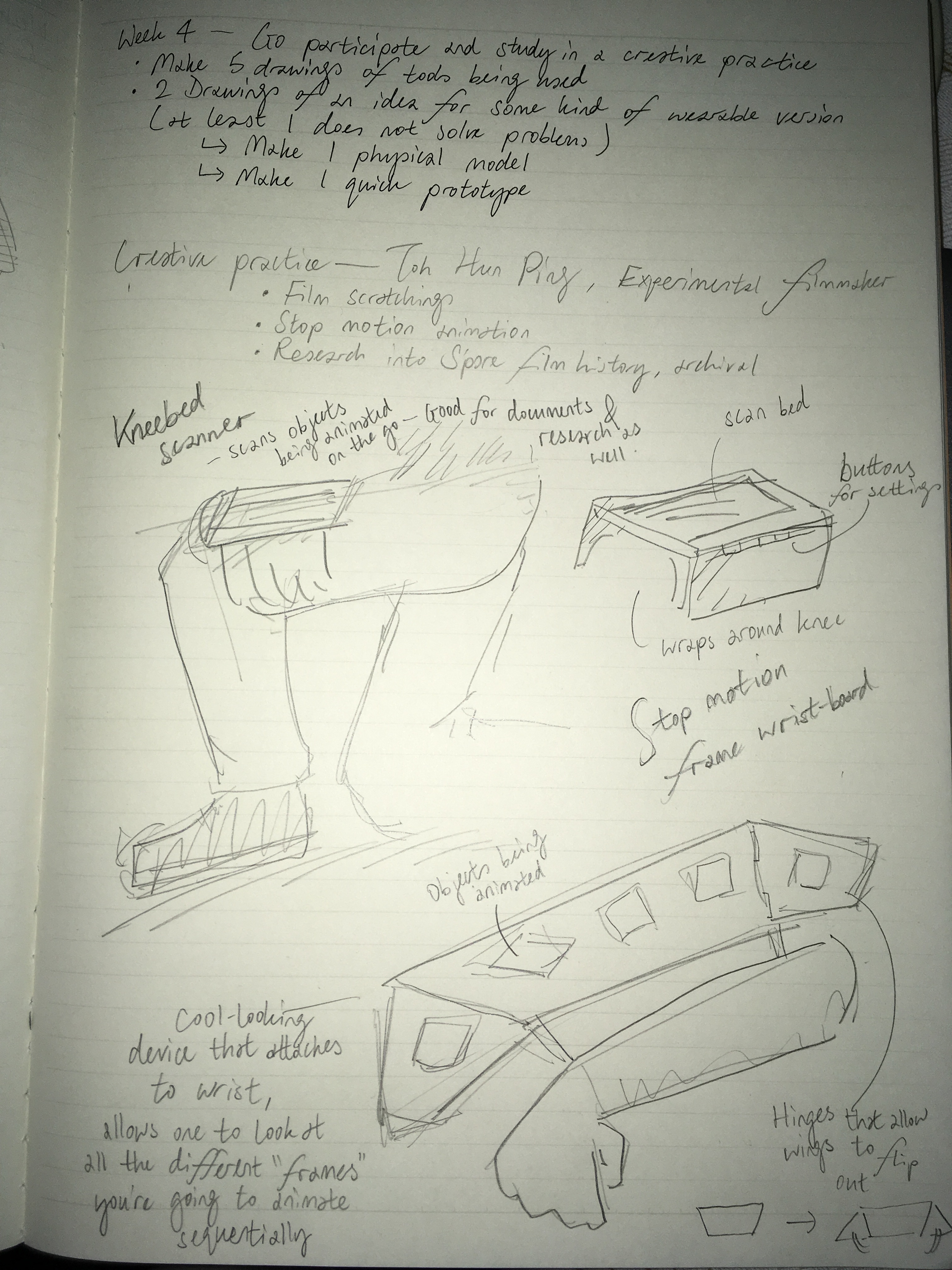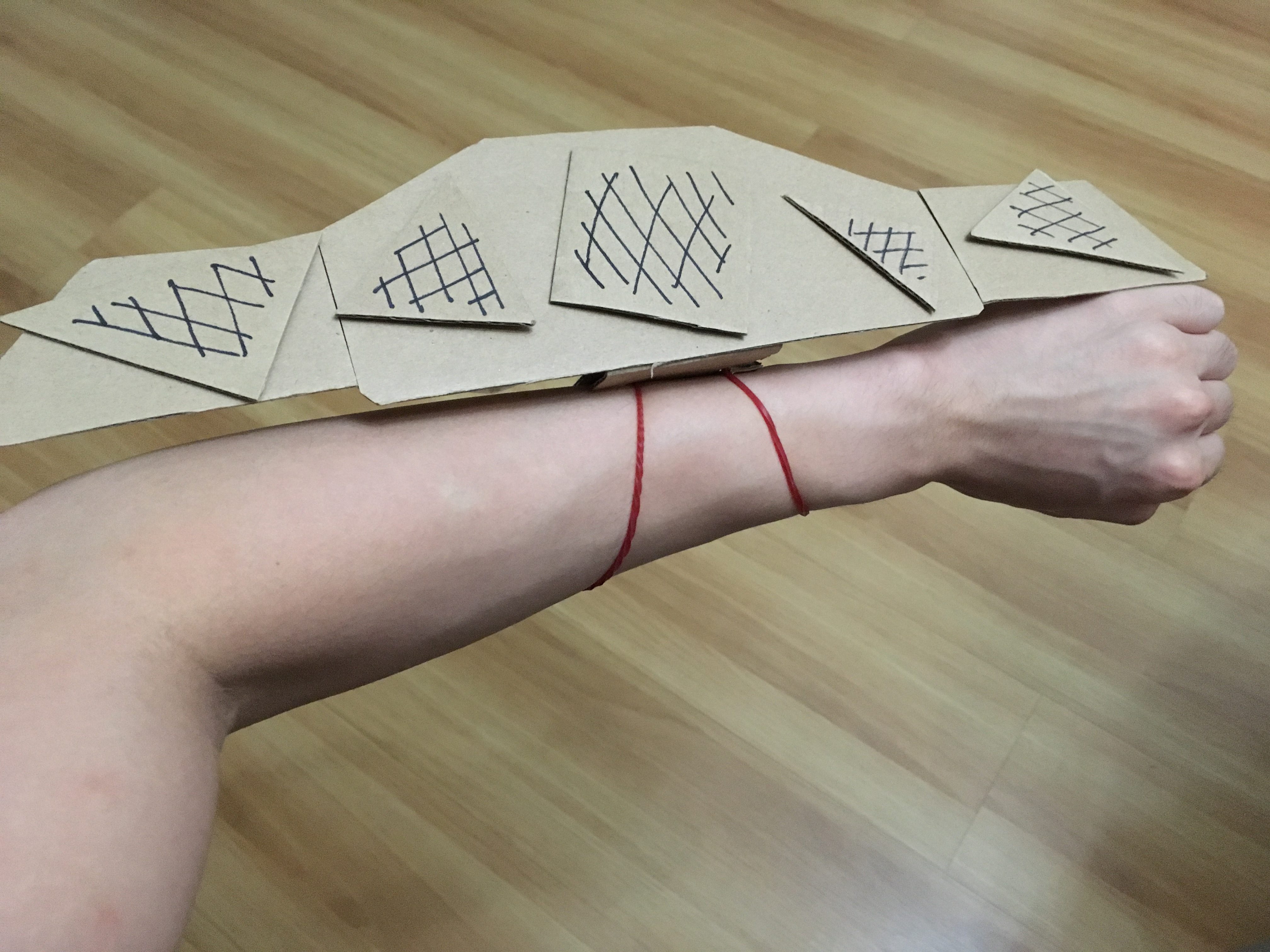Creative practice studied: Experimental filmmaking
In looking at a creative practice, I was recently able to meet artist an who creates darkly beautiful experimental films through the rather laborious processes of scratching into, manipulating, and creating physical materials and artefacts, from film strips to tiles. A trailer of his screened works may be seen in the video above. He would animate these objects through stop motion techniques to create sensuous, ethereal images (which are sometimes unnerving), as seen from the excerpts in the video above.
As each work depends highly on the manipulation of the material that the artist has decided to focus upon for that specific video, the tools used tended to vary quite a bit.

Some tools used:
- Film strips, scratched
- with various sharp objects, later illuminated
- by candle, documented with
- a camera;
- also by scanner.
As you may note of the other tools not listed here but included in my illustration, these objects are eclectic and depend on the video work, whether it was a ‘film-scratching’ type of work, as he called it, or one of his newer works which animated other materials that are not included in the above trailer. Perhaps the most consistent were tools for visual documentation: scanners and cameras.
I illustrated some of these tools, and more, below…

Thinking of how I could create wearable tools for an experimental filmmaker made me think of how various tools (both useless and useful) could be embedded into various areas of the body, based on the sturdiness of the body part as a working surface and the mobility. Also, how cool (or uncool) a certain tool may look at a certain area of the body when worn. As such, I came up with two ideas of varying usefulness.
Ideas for wearable tools:
- Knee Scanner
- Stop Motion Wristguard

Knee Scanner
The knee scanner does exactly as it is titled — a scanbed that may be fitted to the lower thigh area, right above the knee. This way, when the user is knelt down, the raised knee allows the lower thigh area to serve as a sturdy surface for scanning materials. Rather useful for on-the-go finding of textures or interesting objects to use within video works.
As such, textures and objects may be digitised into an image file, sent via wifi or bluetooth to a pre-connected computer. This would be perfect for the capturing of textures and surfaces for stop motion-animated images that could coalesce into another video work for the artist.
Also, since the artist conducts extensive research into Singapore’s film history, perhaps the knee scanner may help during research, when an interesting few pages of material have been found and a high-quality scan of these images are needed.
I created a model of the knee scanner to demonstrate how it looks and fits over the knee — I used some shiny plastic to stand-in for the glass of the scanbed. While I wasn’t able to replicate successfully the look of the actual materials that it should have been made of, it visually demonstrates the fit and the general placement of the wearable tool, hopefully serving as a useful visual for understanding the device.


Stop Motion Wristguard
Now, for a less-than-useful device that rests at the intersection of (questionably) cool and impractical. Inspired by 90s’ anime, the Stop Motion Wristguard is wearable which allows one to lay out all of one’s stop motion frames/objects in a sequential order — a mobile working surface that keeps your animation frames organised and within reach.

My prototype demonstrates the laying out of these frames over the surface, attached to the wrist for ease of access and the ability to grab one’s tools with dramatic flourish. The prototype demonstrates how the wearable works, with objects laid out, as well as one of its functions (more accurately, one of its embellishments).

Meant to dramatically swoop open, the Stop Motion Wristguard may expand its surface for more items to be laid out. While the mechanism isn’t quite perfected in the prototype, the hinging of these two wings were demonstrated to show their presence in a final iteration of a Wristguard, were it to be made.
